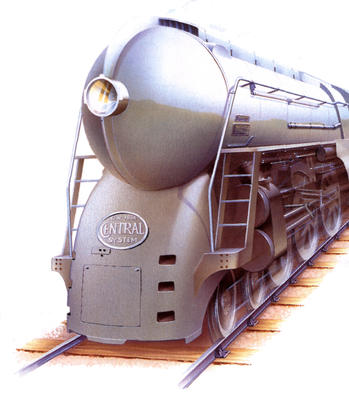|
|
 |
|
|
 |
|
How does streamlining speed up trains?
|
Whenever an object moves through the air, it meets wind resistance. This creates a force, called drag, which slows it down. A pointed or rounded object creates less drag than an angular one. For this reason, fast cars and trains are designed with a rounded front, called streamlining. One of the world's most famous streamlined trains was the Twentieth Century Limited, which ran between New York and Chicago in the 1930s. | | Ten streamlined locomotives were built for the Twentieth Century Limited. They could haul the 1,000-ton train at over 100 mph (160 kph). |
|
| |
Previous:
Back
|
Book:
1001
|
Section:
Science and Technology
|
Chapter:
Railways
|
|
|
|
 |
|
|




